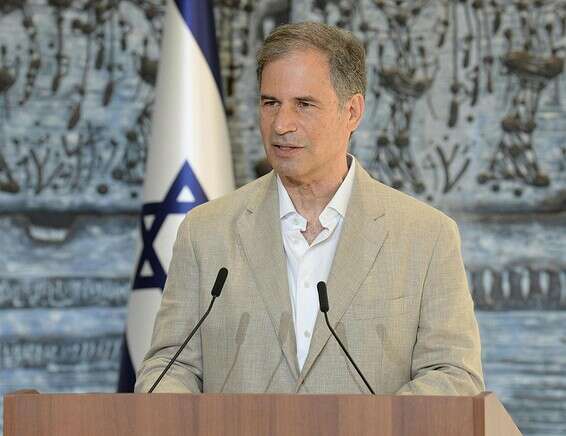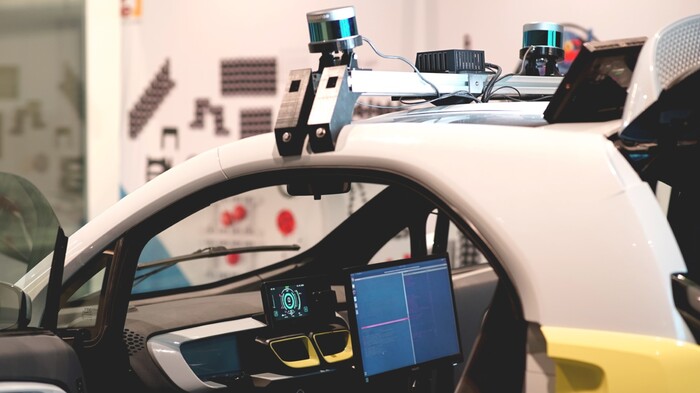Israeli children out of the atmosphere: 18 years after the launch of the space shuttle "Columbia", an Israeli astronaut will perform experiments on school students in space • The chosen ones worked on the experiments for two years
Photo: NASA
Every year, as part of the Israeli Space Week, the final of the "Ramon Spacelab Ramon" experimental competition of the Ramon Foundation takes place, in which students from all over the country compete for the possibility of conducting an Israeli experiment at the International Space Station.
The program was initiated by Rona Ramon and Israeli space engineers to continue the path of Ilan Ramon - who conducted an experiment called the 'chemical kindergarten' of Israeli children as part of the Columbia mission.
As part of the program's first mission, the Laurel Clarke Clark Mission, Slovenian students also participated, as part of a collaboration between the countries that see space as an international language. The Slovenian students and the Slovenian Ambassador to Israel With students from Israel under the same program operated in both countries.
Unlike previous years in which the winning experiments were sent and performed by NASA astronauts, this year, the winning experiments will be sent along with Eitan Steva, the second Israeli astronaut in space travel at the end of 2021. Steva will be the first Israeli to arrive at the International Space Station. Unprecedented experiments in the scope of Israeli technologies and scientific developments by researchers and startups, including the winning experiments of Ramon Spacelab's students.
The winners were selected from 17 classes from around the country that qualified for the finals
The chosen ones worked on the experiments for two years together with experts from Tel Aviv University, the Technion, Ben Gurion University and more.
Among the judges who selected the experiments were NASA officials and senior figures in the Israeli space industry: astronauts Don Thomas, Gert Reisman and Steve Maclean, Dr. Eugene Tu - Director of the NASA Research Institute Ames-Dr. Jacob Cohen, Scientist Chief of NASA Ames, father Blsbrgr-director of the Israel space agency, Inbal Kreis - Director of innovation systems missiles and space Israel Aircraft Industries, and others.
the four trials that won the honorable title and will be performed in space by strong sativa international space station, just 400 kilometers from the planet Haaretz, are:
The study of Amit High School in Safed, which examines the effect of adding moringa seed powder and copper pieces on the growth of E.coli bacteria under micro-gravity conditions?
The experiment examines the effectiveness of the water purification process using moringa and copper seeds in the International Space Station, by testing the presence of E.coli bacteria.
If the experiment is successful, and the water is purified using moringa and copper seeds, we can use this method for long-term space missions and also in the space station itself.
We can also improve water purification in developing countries.
This experiment was conducted in collaboration with Peleg Hagalil.
Video of the winners of the "SpaceSlav" final
The second experiment is an experiment by Shimon Ben Zvi High School in Givatayim, which examines
how micro-gravity will affect the rate of degradation of PET plastic given Ideonella Sakaiensis bacteria?
An experiment that examines the rate of degradation of plastic in space.
If the plastic decomposes faster than expected, we can use the findings obtained to implement solutions to the plastic problem in several ways, so that the demolition and decomposition of the plastic will become simpler and faster.
The experiment was conducted in collaboration with the laboratory of Dr. Farhi Waxman of Tel Aviv University.
The third is the experiment at Dekel Vilnai School in Ma'ale Adumim, which
examines how micro-gravity conditions will affect the rate of nanoparticulation of ghost cells for cancerous growth.
This is an experiment that will examine how micro-gravity conditions affect the rate of nanoparticle nanoparticles for cancerous growth.
The aim of the experiment is to understand whether micro-gravity conditions may increase the number of ghost nanocells that will successfully bind to the cancerous growth in that period of time.
The experiment was conducted in collaboration with Prof. Marcel Mahlouf of the Technion.
And the fourth and final experiment of a new high school in Tel Aviv that examines the
effect of micro-gravity on microbiota and microbiota in response to antibiotics?
The experiment examines the effect of micro-gravity in space on the microbiota bacteria present in the gut, as well as the effect of antibiotics on microbiota under micro-gravity conditions.
The experiment will examine the changes that will be obtained in the bacteria, and from this it will be possible to deduce the function of the microbiota in space against antibiotics - in an attempt to optimize the microbiota transplants in the earth and in space.
The experiment was conducted in collaboration with Prof. Kobi Moran-Gilad of Ben-Gurion University.
The enrollment program, which begins each March, allows students a unique opportunity to submit an experiment to the International Space Station through an annual research-based learning program.
Throughout the year, students are accompanied by a mentor from the Ramon Foundation and perform a number of framework missions named after members of the Columbia Ship crew, whose goal is to equip the group with a rich toolbox to perform the climax mission - an experiment to send an experiment to the International Space Station.
Upon the return of the experiments from the International Space Station, after being operated by astronauts, the results are transmitted to analysis and research papers whose results are published in journals and scientific websites.








